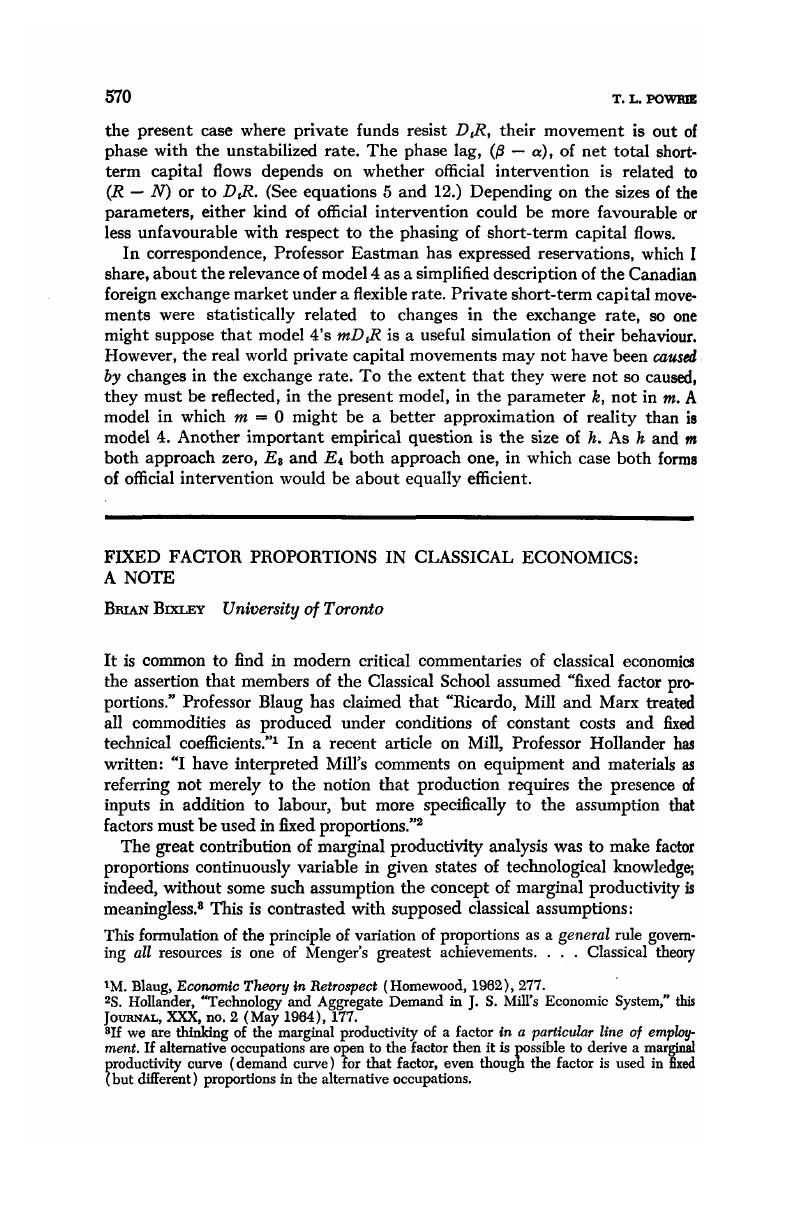Article contents
Fixed Factor Proportions in Classical Economics: A Note
Published online by Cambridge University Press: 07 November 2014
Abstract

- Type
- Notes
- Information
- Canadian Journal of Economics and Political Science/Revue canadienne de economiques et science politique , Volume 31 , Issue 4 , November 1965 , pp. 570 - 575
- Copyright
- Copyright © Canadian Political Science Association 1965
References
1 Blaug, M., Economic Theory in Retrospect (Homewood, 1962), 277.Google Scholar
2 Hollander, S., “Technology and Aggregate Demand in J. S. Mill's Economic System,” this Journal, XXX, no. 2 (05 1964), 177.Google Scholar
3 If we are thinking of the marginal productivity of a factor in a particular line of employment. If alternative occupations are open to the factor then it is possible to derive a marginal productivity curve (demand curve) for that factor, even though the factor is used in fixed but different) proportions in the alternative occupations.
4 Stigler, G. J., “The Economics of Carl Menger,” Journal of Political Economy (04 1937), 229–50.CrossRefGoogle Scholar Stigler adds that this theory–the neo-classical–“is unquestionably superior to any preceding explanation of the determination of the value of productive agents, with the possible exception of that of von Thünen.”
5 And remember, this is a long-run analysis, so it is not any fixity of factors in the short-run Hnse that prohibits adaptation.
6 Certainly they had the opportunity to see that factor prices could influence the speed wfth which an innovation could become an economically feasible proposition. Consider the impact of Cartwright's power loom (1785). “The appaUing misery of the weavers who, in 1839, still used hand looms, had become worse and worse as the grinding competition of machinery increased. But the worse it became, the more it delayed the universal use of the new equipment, for wages sank so low that it paid better to use men than machines.” Mantoux, P., The Industrial Revolution in the Eighteenth Century (London, 1928), 249.Google Scholar
7 “Technology and Aggregate Demand in Mill's System,” 178.
8 Mill, J. S., Principies of Political Economy, Robson, ed. (Toronto, 1965), 719.Google Scholar Even if “capital” is here intended to mean a “wages fund,” Mill still makes no mention of any changes in the quantities of co-operative factors.
9 Ibid., 722.
10 Ibid., 93–4.
11 Ibid., 94.
12 Ricardo, D., On the Principles of Political Economy and Taxation, Sraffa, ed. (Cambridge, 1953).Google Scholar Hollander alludes to the “Ricardo effect” (p. 178), but instead of its relative neglect in classical writings being attributed to those writers' recognition of the discrete nature of productive processes, we are told simply that Mill “pays no attention to the Ricardo effect.” This famous chapter “On Machinery” has for long been a worrying breach in the fixed-proportions dike.
- 1
- Cited by




